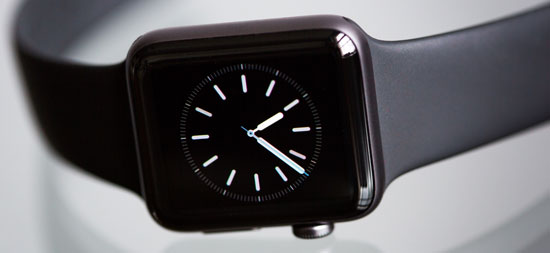
Jul 26, 2018
Blog Digital World Market Opportunities Behind the Short Battery Life of Wearables
The following is an excerpt from BCC Research Report “Mobile Chargers: Global Markets” by Mohammed Javed.
Smart wearable devices are gadgets that can be worn and incorporated with smart sensors, which can be connected to the internet for data exchange. Various companies such as Samsung, Google and Apple are betting on the fact that consumers will want to wear internet-connected watches, computerized glasses, and other gadgets. However, there are several reasons that people are not flocking to buy these devices just yet. At present, battery life is considered to be the biggest pain point in wearables. Most of these devices can also have several other shortcomings including slow apps, less-than-compelling software, or just plain unattractiveness. However, unlike short battery life, these shortcomings can be overcome. Battery life is considered to be an altogether different problem.
Because being thin, small and lightweight is a mandatory physical requirement of these wearable devices, battery life in wearable technology is considered to be the main constraint. Conventional batteries such as lithium-ion (Li-ion) coin cells fit the bill and are considered fine for sensors as well as other very low-power wearable devices. However, they still struggle to keep up with the demands of more capable wearables including fitness bands and smart watches. There can be numerous ways of charging these smart wearable devices, including traditional (USB or adapter) battery charging, Qi-compliant wireless charging solutions, energy harvesting from body power management, and so forth.
Charging the smart wearable’s battery can be done in a traditional way just by plugging the device into a USB port or adapter. This is considered to be the most conventional way. For instance, TI’s bq25100 single-cell Li-ion charger offers a required solution that is half the size of the existing charger solutions. It supports low-cost unregulated adapters and may be used in the cost-sensitive wearables market. This charger IC has a high (30.0 V) input rating with input overvoltage protection at 6.5 V, along with other protection features. Additionally, Maxim’s MAX14676/76A is another option for battery charge management in wearable applications. These highly integrated chargers are described as Wearable Charge Management Solution ICs. The solution includes a linear battery charger and possesses numerous low-power power management peripherals, which save system board space while extending battery life.
The MAX14676/76A consists of a 1.8 V low–quiescent current (IQ) 200 mA buck regulator, and a 3.2 V low-IQ 100 mA low dropout (LDO) regulator. Moreover, it includes a 6.6 V low-IQ 120 microampere charge pump, a 2.0 V, “always on” 50 microampere LDO, a +5 V safe output LDO, and a 5 V to 17 V output boost converter to support a wide variety of display options. Furthermore, both the above discussed chargers, bq25100 and MAX14676/76A, can be paired with a wireless power receiver/transmitter solution to provide wireless charging capability to any smart wearable device design.
Wireless charging is another technology that is becoming very popular nowadays for smart wearable devices because of its convenience. As batteries for smartwatches need regular recharging, their users find it easier to just drop their devices on a charging base rather than plugging them into a cabled connector. As a result, many wireless charging solutions are available from various manufacturers for smart wearable devices. Furthermore, motion-powered chargers for smart wearable devices have been one of the most recent technological advancements. However, the energy harvested from the body, such as from body heat or motion or from environmental factors such as ambient light, can yield only microwatts to milliwatts; this can be further enhanced and provide enough power for something like a smartwatch.
Significant growth of smart wearable devices along with recent advancements in a variety of chargers have been the major factors for consistent growth of this market. These factors are expected to drive the market further during the forecast period.

From smartphones to satellites, antennas play a vital role in enabling the seaml...

Introduction Artificial Intelligence (AI) and the Internet of Things (IoT) are r...

We are your trusted research partner, providing actionable insights and custom consulting across life sciences, advanced materials, and technology. Allow BCC Research to nurture your smartest business decisions today, tomorrow, and beyond.
Contact UsBCC Research provides objective, unbiased measurement and assessment of market opportunities with detailed market research reports. Our experienced industry analysts assess growth opportunities, market sizing, technologies, applications, supply chains and companies with the singular goal of helping you make informed business decisions, free of noise and hype.